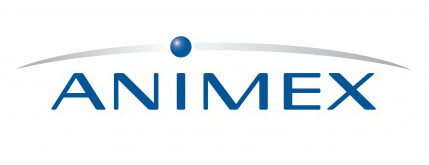
26 September 2022
RFID – identification and tracking of goods
One of the prerequisites for optimizing logistics processes is awareness of the current situation: the degree of progress of individual procedures, the location of shipments, the occurrence of events that may affect the timeliness of deliveries and damage during transport and storage. The faster and more accurate the information, the less delays, losses and customer dissatisfaction.
When you’re working with hundreds of thousands of individual and bulk packages, moving them between your own warehouses or transporting them from the manufacturer or vendor to the customer, you need to act with precision. You need to recognize each detail, remember its location, sometimes also storage conditions, shelf life and other commodity-specific parameters. Barcode or QR labels and RFID have been helping with this for years.
Barcode or QR labels
Barcode or QR code labels are a well-known and well-tested solution, but they come with some serious drawbacks. Labels with a printed code are fragile, susceptible to damage, dirt or water. While the checksum protects against mistakes, an illegible code requires the intervention of a human to read the description of the shipment, print a new label or manually enter the missing data. This takes time, and since time is money, the use of graphic code labels is expensive, even though the labels themselves are almost free.
Even if the label is perfectly legible, it takes a while to locate the label, so it introduces delay, increases the time for shipment handling, warehouse inventory, etc. You have to find the label to read it, and it can be cumbersome and time-consuming to check whether a specific package is indeed in the vehicle or warehouse.
RFID – better identification
There is an effective cure for this logistical headache – tags (RFID tags). These are small, relatively inexpensive electronic devices, often without their own power source, equipped with an antenna – a module that receives and sends radio waves – and a small-capacity memory that can store the tag’s serial number and data about the tagged product. The beauty of RFID technology is that it is not necessary to see it or touch it to read the information stored on it.
Since data transmission is carried out via radio waves, it is sufficient for RFID tags to be within range of a transceiver – a device that transmits and receives radio waves. Stimulated by a radio pulse, the tag’s electronic circuitry will send the data stored in it to the transceiver. It does not matter whether the tag is on the outside or inside of the package, as long as it is transparent to radio waves.
Smart warehouse
Suppose we install multiple antennas working with transceivers in a warehouse where only RFID tagged products are stored, and each antenna can transmit and receive a signal from a certain part of the room. If we need information about the contents of the warehouse, all we need to do is “query” the RFID tags. This can be done with a click of the mouse, without stepping away from the monitor, because the warehouse “knows” what is stored in it.
If you place RFID readers at loading ramps and exits, you get a system that automatically updates and inventories itself, and collects information about where and when each piece of merchandise is received and released. This solution offers precision and speed that could not be achieved with traditional tags. The use of this solution translates into shorter handling times and fewer errors, and therefore lower operating costs. This pays off, even if the RFID tag is not as cheap as a traditional QR or barcode sticker.
The advantages of RFID tags are evident at every stage of the supply chain, including sales. A customer who puts only goods tagged with RFID tags in the shopping cart, actually does not need to take them out at the checkout. If the system is equipped with an RFID antenna and transceiver, it will read the contents of the shopping cart itself and issue a receipt. Only goods sold by weight will require separate billing.
RFID is one of the tools that allows logisticians to breathe a little and focus on solving problems that technology can’t handle (yet).
















